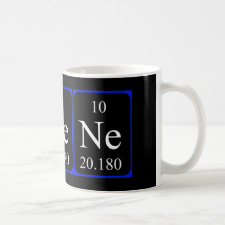
Authors: Qiao L, Gan N, Wang JY, Gao HJ, Hu FT, Wang HF, Li TH
Article Title: Novel molecularly imprinted stir bar sorptive extraction based on an 8-electrode array for preconcentration of trace exogenous estrogens in meat.
Publication date: 2015
Journal: Analytica Chimica Acta
Volume: 853
Page numbers: 342-350.
DOI: 10.1016/j.aca.2014.10.041
Alternative URL: http://www.sciencedirect.com/science/article/pii/S0003267014012963
Abstract: A novel 8-electrode array as stir bar was designed for selective extraction of trace level exogenous estrogens from food samples, followed by liquid desorption and HPLC-photodiode array detection. The array consisted of 8 screen-printed electrodes and each electrode was modified with Fe3O4@meso-/macroporous TiO2 microspheres and molecularly imprinted film (m-TiMIF). The fabrication of the imprinted film coating was very simple without organic solvents and chemical grafting. Both bisphenol A (BPA) and diethylstilbestrol (DES) were employed as templates in m-TiMIF fabrication in order to enrich both targets simultaneously. Interestingly, the imprinted stir bar array showed higher extraction capacity and selectivity for BPA and DES than the non-imprinted counterpart. Meanwhile, it exhibited fast adsorption and desorption kinetics due to increased mass transport in the ultra-thin film. Importantly, the m-TiMIF coating was robust enough for at least 20 uses without obvious alteration in extraction performance. The main parameters affecting the extraction efficiency, including stir speeding, sample pH, ionic strength, extraction time, desorption solvent and time, were optimized. Under optimal experimental conditions, the limits of detection (S/N = 3) of the developed method were 0.28 and 0.47 μg L-1 for BPA and DES respectively, with enrichment factors of 32.6 and 52.8-fold. The linear ranges were 3.0-1500 μg L-1 and 4.0-1500 μg L-1 for BPA and DES, respectively. The m-TiMIF-coating conferred better recovery and selectivity, compared with the commercial stir bar coating. The new method was successfully applied to assess BPA and DES in pork and chicken samples with satisfactory recovery
Template and target information: bisphenol A, BPA, diethylstilbestrol, DES
Author keywords: Stir bar sorptive extraction, Electrode array, Electrochemical polymerization molecularly imprinted film, Fe3O4@meso-, macroporous TiO2 microspheres, Exogenous estrogens, Pork and chicken



Join the Society for Molecular Imprinting

New items RSS feed
Sign-up for e-mail updates:
Choose between receiving an occasional newsletter or more frequent e-mail alerts.
Click here to go to the sign-up page.
Is your name elemental or peptidic? Enter your name and find out by clicking either of the buttons below!
Other products you may like:
 MIPdatabase
MIPdatabase









